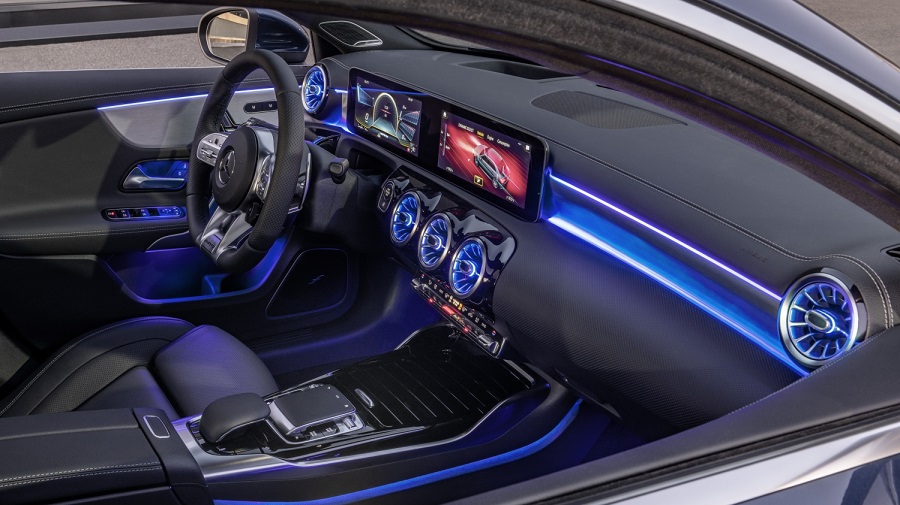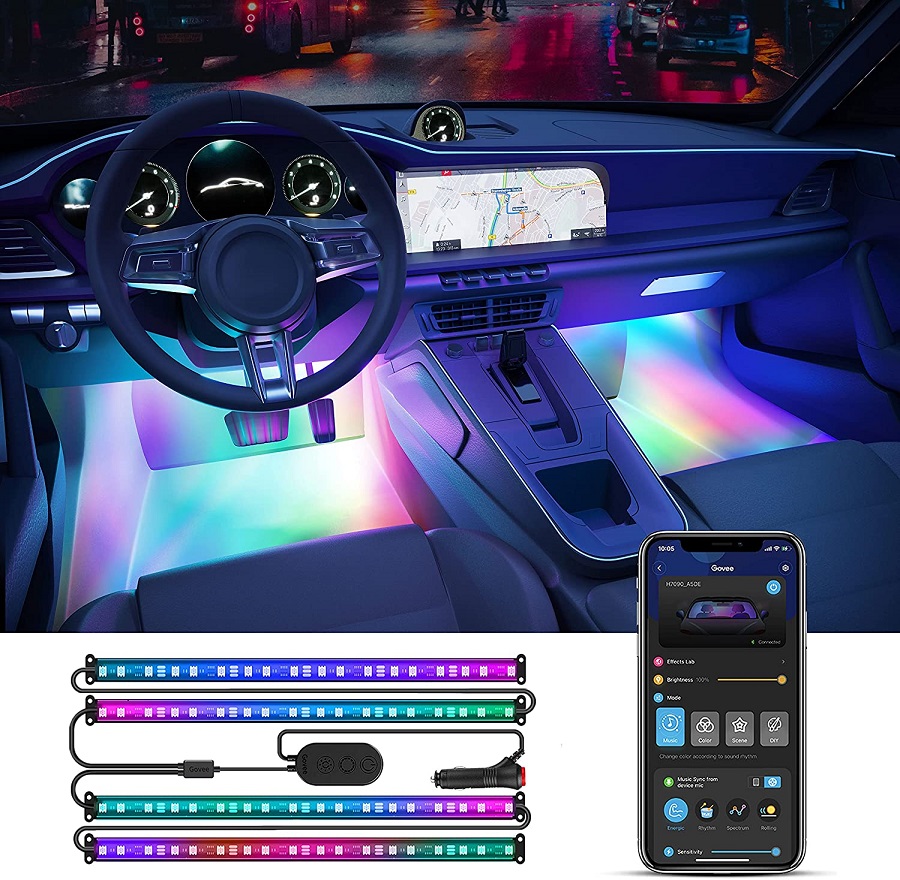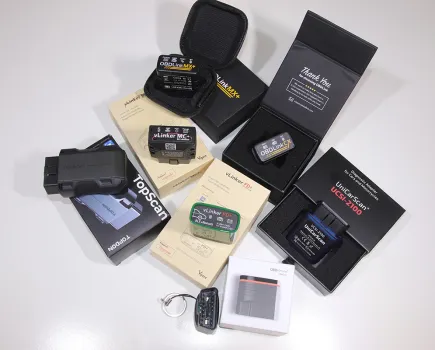LED interior car lights are a fun and cheap way of adding character to your ride’s cabin. Here’s everything you need to know about them.
Are you looking to inject some life into the dreary grey plastic of your car’s interior? Well, when used tastefully, LEDs can add a welcome splash of accent color. In fact, some OEMs are even beginning to get in on the act by adding customizable interior lighting to new factory-fresh models, like the Mercedes you see above.
There are endless ways you can implement LEDs inside your car, so in this article, we’ll run you through a few of the more commonly seen ideas to give you some inspiration.
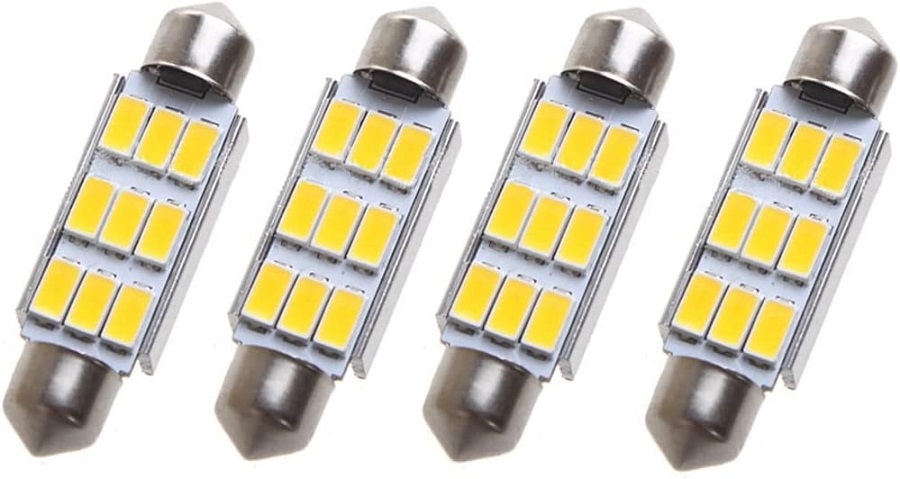
How do LEDs work?
An LED, or light emitting diode, is a powerful and efficient way of producing light. They might not look like how you expect a traditional light bulb to look though, and that’s because there’s nothing traditional about them. Rather than relying on filaments, LEDs illuminate when the electrons in their semiconductor material get all fidgety. That’s the technical term.
It’s all very clever, but essentially when these little diodes receive an electrical current they release photons which are what make up our concept of light. This process is called electroluminescence. On top of that, if you change the amount of current that a diode receives, that’ll cause the light it emits to vary in color. Well, that’s the *very* simplistic way of looking at it, anyway.
When used in car interiors, you’ll usually see LEDs packed into tubes or localized within a bulb, and only very occasionally installed one by one. To give you a better idea of what this all might look like, here are some car cabin examples that someone else made earlier.
Types of LED Interior Car Lights
Footwell Lighting
If you want to get quite a big visual effect from your LED install, an LED strip in the footwell could be the way to go. Relatively easy to install, LEDs fitted into your car’s footwell can provide a large amount of aftermarket luminance, but as they’re tucked away low down, they shouldn’t distract you as a driver.
This is perhaps the most commonly seen example of LED strip use in a car’s interior, and it’s easy to see why. It’s a cost-effective, easy way to install plenty of your own personality and aesthetic tastes into the cabin.
Interested? Check out this offering from Govee which not only offers a range of lighting solutions, but can even sync up to the beat of your music!
We check 1,000s of prices on 1,000s of retailers to get you the lowest new price we can find. Fastcar may get a commission from these offers. Read more here.
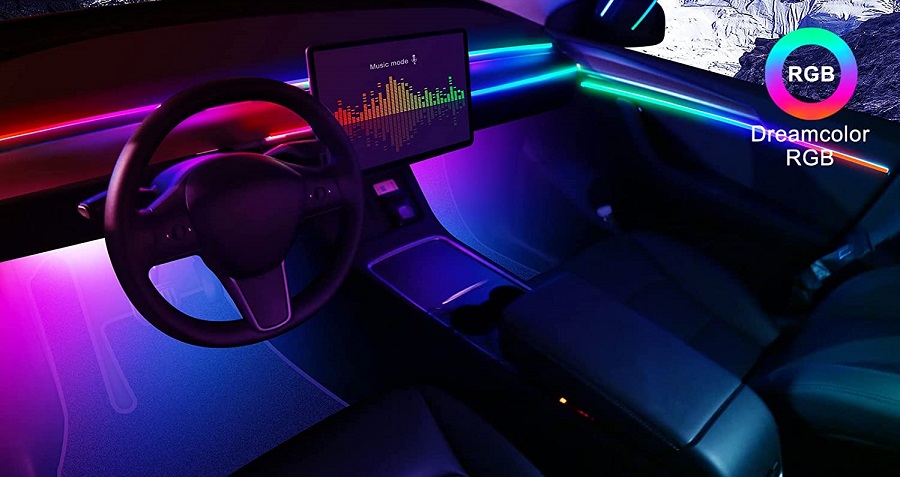
Trim Accent Lighting
Another popular route to take is trim accent lighting. While you can use LED strips to provide an accent color in various tucked away locations, more intricate trim lighting can be achieved via the use of LED wire. Instead of mounting these LEDs like you would a regular strip, you instead wrap the LED wire around the crevices of panels or trim.
If overdone, it might come across as a bit much, and you’ll need to use decent quality wire and install it well to avoid the whole thing looking super tacky. But, nonetheless, LED wire can be very effective at enhancing car interiors when used sparingly.
There are plenty of incredibly cheap options out there that will do the job, but may not look or last too good. We’ve even heard of cheap wire strips giving off an annoying high pitched sound, which is a great way to ruin your driving experience. For the best results, we’d naturally always recommend going for a higher end product such as this one. Check out price comparisons below.
We check 1,000s of prices on 1,000s of retailers to get you the lowest new price we can find. Fastcar may get a commission from these offers. Read more here.
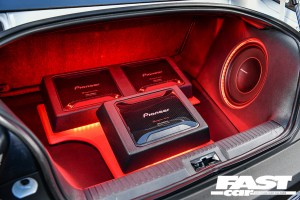
LED Interior Car Lighting In Boot Builds
If you’ve kitted out the trunk/boot of your car with a high end aftermarket sound system, LEDs are a great way to add more theatre to the space. Heck, even if you still use your trunk as a… trunk, a few LEDs could add some fun to one of the most visually boring areas of a car.
Other articles you might like:
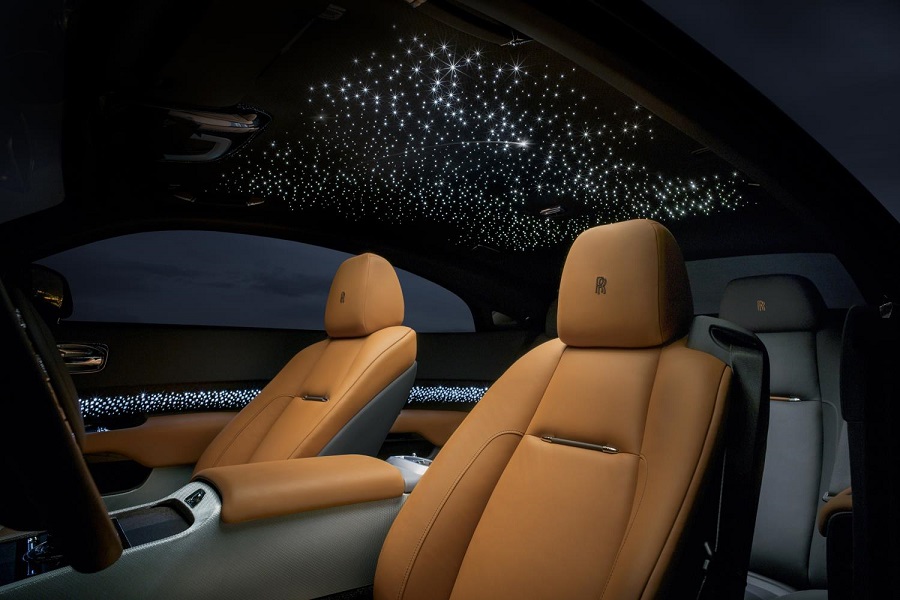
Starry Headliner
An idea blatantly stolen from the creative minds at Rolls Royce, the luxury British marque’s starlight headliner has sparked a new wave of installing individual LEDs into car ceilings. The premise is actually quite an effective one, as it adds a further element of spectacle to your car’s interior without being too overt or brash like some of the more solid and colorful options out there. Compared to the other lighting mentioned here though, this more intricate approach can be a little harder to pull off when it comes to DIY fitting.
Alternatively, you can get LED solutions which project starry light or various patterns onto your car’s headliner, but of course, the effect won’t be as good.
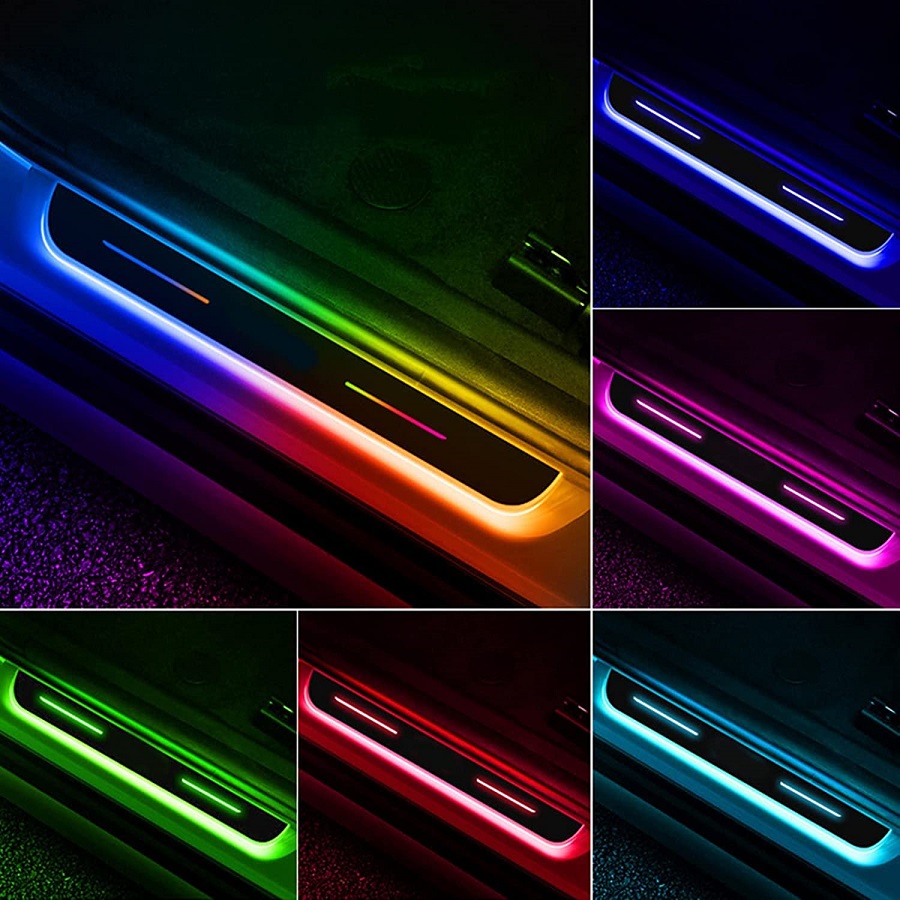
Car Interior Door LEDs
Arguably a little on the more controversial end of the taste spectrum, door lights could be a nice finishing touch. You won’t see them when on the move, but when you open the door, light will shine down onto the floor below it. This could have practical uses like illuminating puddles, but could also simply just be an extension of your car’s color palette. In fact, some people even choose to project an image, like a marque logo, from their doors onto the ground below.
A different type of door light is the one pictured above, which adds LED strips to any trim along the door sill. Check out price comparisons for those below:
We check 1,000s of prices on 1,000s of retailers to get you the lowest new price we can find. Fastcar may get a commission from these offers. Read more here.
How safe are LED Interior Car Lights
Given many manufacturers install LEDs that are color-changeable from factory, we’d suggest they’re quite safe. That being said, the more you add in and illuminate, the more light you will have in the cabin. On night drives, this can not only be distracting to you, but it could also distract oncoming drivers. Lastly, you’re best staying clear of flashing LEDs, especially when driving.
Looking for more inspiration? Check out our other top automotive interior design ideas here!

